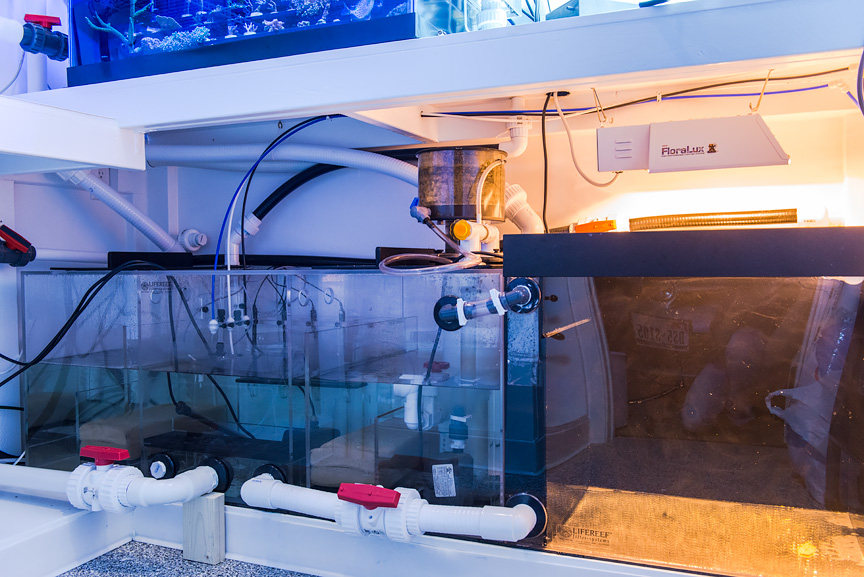
Chaetomorpha Algae: Nature’s Filter!
Why use Chaeto?
What I like about using Chaetomorpha Algae is that it pulls out massive amounts of nutrients. So much so that you may run into a problem with it pulling out too much! I have mangroves in another tank, and I’ve had other macroalgae before, but nothing is the workhorse that is Chaetomorpha. It truly is nature’s filter!
What’s needed?
Nutrients
Chaetomorpha Algae (commonly referred to as Chaeto) is a plant and plants need food. The excess nutrients in your water
Lighting
The other part of the equation is lighting. I think we’ve all seen the typical lighting setup for growing Chaeto… a shop light from the local home improvement store with a spiral CF bulb in the 5-6000k spectrum range. While doing some research and through a discussion with a member of the reef forums, I decided to try using a 150w Floralux HPS lamp. Yes… 150w. And the spectrum is so yellow/orange, it’s around 2400k. But let me tell you, this worked!
I initially put a baseball-sized wad of Chaeto in my refugium. The tank was brand new so it had very little nutrients. Every day I would come home and could see that the ball had grown. At first, I thought maybe it was just opening up/expanding from the constant spinning, and it definitely was. But after several days I began to realize that it was also growing. And it kept growing. Within weeks it was beachball sized. I couldn’t believe it. And the cycle continued. I would trim it back down and within weeks it was huge again.
Setup Overview
Here are some pics of the setup.
The brand new refugium. You can see the white spray bar at the top right. This is where water enters the refugium and creates a gyre that will tumble the C

Here it is hooked up to the sump.
You can also see the light installed above it.

Here’s what it looks like when the Chaeto is beach-ball sized and spinning.
Kind of mesmerizing, isn’t it?
And finally, this is what it looks like when it’s time to trim.
This ball of Chaeto had gotten so big it completely filled the tank and had stopped spinning about a week prior, but it kept growing. I rotated it by hand every couple days just to make sure it got light underneath.
Conclusion
I hope this gives you some ideas on how you can successfully incorporate Chaetomorpha Algae into your build and really make it work for you. It’s a good time saver for reefers because it means less time dealing with reactors or other means of mechanical nutrient removal. Regardless of the size of your setup, the basic principals are the same. A simple dedicated space with a gyre to keep the Chaeto suspended/spinning, and intense lighting.
I sometimes link directly to products and services that I REALLY like and think you may enjoy or find useful as well. If you buy them, I may get a small share of the revenue from the sale from our partners.






